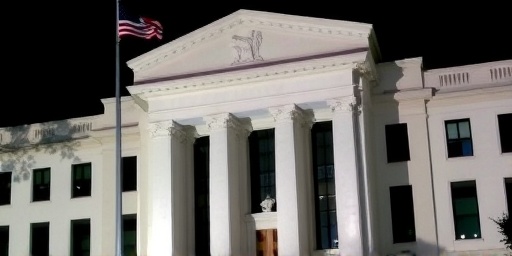In a highly anticipated speech, Federal Reserve Chair Jerome Powell signaled that the central bank is leaning toward a potential 25-basis-point rate cut at its December meeting, offering a glimmer of relief to borrowers and investors amid ongoing economic uncertainties. This hint comes as inflation shows signs of cooling and the job market remains resilient, key factors influencing the Fed’s monetary policy decisions.
Powell’s comments, delivered during a panel discussion at the Economic Club of New York, underscore a cautious optimism within the Federal Reserve. He emphasized that recent data on consumer prices and employment have provided the committee with the flexibility to consider easing interest rates without derailing progress toward the Fed’s 2% inflation target. Markets wasted no time in reacting, with the 10-year Treasury yield dipping below 4.2% shortly after the remarks, reflecting investor bets on looser monetary policy ahead.
Powell’s Cautious Optimism on Cooling Inflation
Jerome Powell’s latest remarks paint a picture of an economy where inflationary pressures are finally abating after years of aggressive rate hikes. Speaking on the current state of interest rates, Powell noted that headline inflation has moderated to around 2.5% year-over-year in October, down from peaks above 9% in mid-2022. “We are seeing disinflation across a broad range of goods and services,” Powell stated, adding that core PCE inflation—the Fed’s preferred gauge—hovered at 2.7%, edging closer to the target.
This cooling trend is attributed to several factors, including softening energy prices and a stabilization in supply chains post-pandemic. For instance, gasoline prices have fallen by more than 15% since the summer, contributing to lower overall consumer costs. Powell highlighted the role of the Fed’s previous 525 basis points of rate increases since March 2022 in taming inflation, but stressed that the path forward depends on sustained progress. “If inflation continues to move toward our 2% goal, we can afford to be patient and responsive,” he said.
Economists echo this sentiment. Dr. Elena Ramirez, a senior economist at the Brookings Institution, analyzed the data in a recent report, stating, “The Federal Reserve‘s data-dependent approach is paying off; with shelter costs decelerating and wage growth stabilizing at 4.1%, the case for a rate cut is strengthening.” However, Powell cautioned against complacency, warning that geopolitical tensions in the Middle East could reignite energy price volatility, potentially complicating the inflation outlook.
To illustrate the progress, consider the following key inflation metrics from the latest Bureau of Labor Statistics report:
- Consumer Price Index (CPI): 2.4% year-over-year in September
- Core CPI (excluding food and energy): 3.3%
- Producer Price Index (PPI): 1.8% year-over-year
These figures suggest that the Federal Reserve‘s tightening cycle may be nearing its end, setting the stage for the anticipated rate cut.
Steady Job Growth Bolsters Fed’s Rate Cut Considerations
Complementing the positive inflation data, the U.S. labor market has demonstrated remarkable resilience, providing a solid foundation for Jerome Powell’s hints at a December rate cut. The September jobs report revealed nonfarm payrolls increasing by 254,000, surpassing economist expectations of 150,000. Unemployment held steady at 3.8%, near historic lows, signaling that the economy is expanding without overheating.
Powell addressed this balance during his speech, noting, “The labor market is cooling but not collapsing, which is exactly the soft landing we have been aiming for.” Wage growth, a critical concern for the Fed due to its potential to fuel inflation, has moderated to 0.3% monthly, translating to an annual rate of about 4%. This deceleration from earlier peaks reduces the risk of a wage-price spiral, giving the Federal Reserve more room to maneuver on interest rates.
Industry-specific insights further support this stability. Sectors like technology and healthcare continue to drive hiring, with gains of 45,000 and 38,000 jobs respectively in September. Meanwhile, manufacturing added a modest 12,000 positions, indicating a broader recovery. Labor force participation has ticked up to 62.8%, suggesting more Americans are re-entering the workforce, which helps ease upward pressure on wages.
Yet, challenges persist. Powell pointed to rising part-time employment for economic reasons, now affecting 4.5 million workers, as a subtle sign of softening demand. “We must remain vigilant to ensure that job growth doesn’t falter under the weight of higher interest rates,” he remarked. Analysts from Goldman Sachs project that the unemployment rate could edge up to 4.0% by mid-2024 if rates remain elevated, underscoring the timing of any rate cut as crucial.
Comparative data from previous cycles highlights the uniqueness of the current environment:
- In 2019, pre-pandemic, the Fed cut rates by 75 basis points amid similar job market strength but lower inflation.
- During the 2008 crisis, aggressive cuts followed a sharp unemployment spike to 10%.
- Today’s scenario blends robust employment with controlled inflation, potentially allowing for a more measured easing path.
Markets Rally as Bond Yields Tumble on Rate Cut Hopes
The financial markets responded swiftly and enthusiastically to Jerome Powell’s dovish tones, with bond yields falling across the curve and stock indices posting gains. The 10-year U.S. Treasury yield, a benchmark for mortgage and corporate borrowing rates, dropped 12 basis points to 4.18% immediately following the speech, its lowest level in over a month. This decline signals investor confidence in an imminent rate cut from the Federal Reserve.
Equity markets also surged, with the S&P 500 climbing 1.2% and the Nasdaq Composite advancing 1.5% on the day. Rate-sensitive sectors like real estate and utilities led the charge, up 2.3% and 1.8% respectively, as lower interest rates would reduce borrowing costs and boost asset valuations. “Powell’s comments were the catalyst markets needed to price in December easing,” said Michael Lee, chief strategist at JPMorgan Chase, in a note to clients.
The U.S. dollar weakened against major currencies, with the euro strengthening by 0.8% to $1.09, reflecting expectations of a less aggressive Fed compared to other central banks. Mortgage rates, which track the 10-year yield, fell to around 6.8% for a 30-year fixed loan, providing some relief to homebuyers who have been sidelined by elevated costs.
However, not all reactions were uniform. Volatility spiked in the VIX index to 18.5, indicating lingering uncertainty about the exact timing and magnitude of the rate cut. Futures markets now assign a 75% probability to a 25-basis-point reduction in December, up from 55% prior to Powell’s speech, according to CME FedWatch Tool data. This shift underscores how pivotal the Federal Reserve Chair’s words are in shaping expectations.
Broader market implications include potential boosts to consumer spending. With credit card rates averaging 21.5% and auto loans at 7.2%, a rate cut could free up household budgets, stimulating economic activity. Investors are also eyeing corporate bond spreads, which narrowed by 5 basis points, suggesting improved risk appetite.
Broader Economic Impacts: From Housing to Consumer Spending
Beyond Wall Street, Jerome Powell’s signal of a potential rate cut carries significant ramifications for everyday Americans and key economic sectors. In the housing market, where high interest rates have locked in millions of homeowners with sub-4% mortgages, a Fed easing could gradually thaw the frozen inventory. Existing home sales, which plummeted 20% year-over-year in September, might see a rebound if mortgage rates dip below 6.5%, according to the National Association of Realtors.
Powell acknowledged this dynamic, stating, “Monetary policy affects the real economy with a lag, and we’re focused on supporting sustainable growth.” For consumers, lower rates could mean cheaper credit for big-ticket items. Auto sales, down 5% from pre-pandemic levels, stand to benefit, as financing costs ease. Retailers like Walmart and Amazon have already reported stabilizing demand, but a rate cut could accelerate holiday spending projections, estimated at $960 billion by the National Retail Federation.
Businesses, too, are poised to capitalize. Small enterprises, burdened by 11% variable-rate loans, could refinance at lower interest rates, fostering investment and hiring. The NFIB Small Business Optimism Index rose to 91.3 in October, its highest in six months, partly on hopes of Fed relief. However, Powell warned that fiscal policy uncertainties, including the upcoming election, could influence the Federal Reserve‘s path.
Internationally, the signal reverberates. Emerging markets, sensitive to U.S. rate changes, saw capital inflows increase by $15 billion in the week following similar past hints. Countries like Mexico and Brazil, with dollar-denominated debt, could face reduced pressure if the Federal Reserve pivots toward cuts.
Potential risks include reigniting asset bubbles if cuts come too soon. Housing prices, up 5% annually despite high rates, might accelerate, exacerbating affordability issues. Powell emphasized data-driven decisions to mitigate such outcomes.
Looking Ahead: Fed’s December Meeting and Policy Outlook
As the Federal Reserve approaches its December 17-18 meeting, all eyes will be on incoming data to confirm Jerome Powell’s optimistic outlook. Upcoming reports on inflation, employment, and GDP growth will be pivotal. Economists forecast Q4 GDP expansion at 2.1%, supported by consumer resilience, but any upside surprises in inflation could delay the rate cut.
Powell reiterated the Fed’s commitment to its dual mandate of price stability and maximum employment, hinting at possible multiple cuts in 2025 if trends hold. “We’re not on a preset path; flexibility is key,” he noted. Market participants anticipate the federal funds rate settling at 4.25%-4.50% by year-end, down from the current 4.75%-5.00% range.
The implications extend to global finance. A dovish Fed could pressure the European Central Bank and Bank of England to follow suit, potentially averting a sharper global slowdown. For U.S. policymakers, success in engineering a soft landing would bolster Powell’s legacy, especially after criticism over initial inflation underestimation.
Investors should monitor the November jobs report and CPI release closely, as they could sway the December decision. If employment softens unexpectedly, the case for a rate cut strengthens; persistent inflation might prompt a pause. Ultimately, the Federal Reserve‘s actions under Jerome Powell will shape the trajectory of interest rates and economic recovery in the months ahead, offering hope for a more balanced growth environment.









